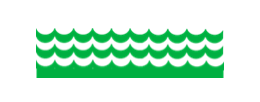Wey Landscape Partnership
- Catchment HostSurrey Wildlife Trust
- River Basin DistrictThames
- Management CatchmentWey and Trib
- Management Catchment ID3114
Catchment partnership vision
Our vision is for a healthy and diverse catchment where all interested sectors, groups or individuals may contribute effectively towards restoring the natural environment for the sustainable use of its essential resources, whilst preserving other valued heritage assets; to benefit both people and wildlife today and in the future.

Jon Hawkins
Related websites
Find out more about the activities and ambitions of this catchment partnership and how you can get involved to help improve the water environment in the catchment.
Catchment challenges
Current challenges identified by partnership

Pollution from waste water
Regular discharges from sewage treatment works and storm water outfalls

Pollution from agriculture and rural areas
Runoff, channelled by roads, leads to diffuse pollution from arable, livestock and horse pasture

Physical modifications
Multiple barriers and impoundments results in restricted fish passage and degraded habitat
Wider water environment challenges identified by partnership
Nature Recovery, designated areas for nature and biodiversity
The River corridor links multiple designated sites, improving the health of the river is critical to allow movement of species in the catchment
Connecting communities with nature
Working with local communities is the most effective way to monitor and restore our catchment, reconnecting with nature has many benefits to society
Support Nature Recovery Network and Local Nature Recovery Strategy
Working together to enable collective effort in nature’s recovery will be essential to achieving success in this area
Protect and restore healthy soils and nutrient balance
Healthy soils help to reduce flood peaks, maintain flows during dry weather, reduce diffuse pollution, improve biodiversity and sequester carbon
Reduce storm overflows and drainage system incidents
Habitat enhancements cannot achieve their maximum benefit as they are impacted by water quality issues, resulting from sewage and other pollutants
Build environmental resilience and adaptation to climate change
We are increasingly seeing dry headwaters and flash flooding, we want a catchment with resilience built into the overall ecological system
Future challenges predicted by partnership

Changes to the natural flow and water levels
Many areas have been modified in the catchment hindering aquatic organism breeding and passage, natural fluctuations are exacerbated, and this will increase with climate change

Pollution from waste water
Pressures from sewage treatment works and misconnections are high in the catchment, ultimately this determines the success of river health

Physical modifications
Too many structures along the catchment hindering fish and Eel passage, also modified channels causing over silting and reduced habitat quality, complex land ownership arrangements
Future challenges predicted by Environment Agency
Future challenges in 2050
- Invasive Non-native Species
- Pollution from waste water
- Pollution from Towns Cities and Transport
Emerging challenges
- Pollution from waste water
- Physical Modifications
- Changes to the Natural Flow and Water Levels
Partnership success highlights 2016 to 2021
The Wey landscape Partnership developed a prioritised programme of works to complete fish passage at 16 key barriers throughout the catchment as part of the Wey Fish Pass and Wetland Delivery project (FWD). The first phase of this project will open over 100km of the River Wey to fish and reconnect the Thames with the Wey for the first time in centuries. 12 restoration projects have been completed across 6 separate waterbodies restoring natural processes and instream habitat over 2.1km of river. Awareness-raising through walks, talks, events and practical task days every year for the past 6 years during an annual 'Rivers Week' to coincide with world rivers day. 69 volunteers trained in Riverfly monitoring and 400 surveys carried out across 59 different sites leading to a major pollution incident being resolved and the discovery of a new invasive species in the catchment. 74 volunteer river monitors trained in the RiverSearch citizen science project which mapped and monitored 100km of the river. 2 research studies undertaken where volunteers worked with universities to monitor the effects of restoration on aquatic invertebrates; multiple invasive species workshops and task days delivered across the catchment; involvement in the Centre for Agriculture and Bioscience International (CABI) trial for biological control of Japanese knotweed; mass water samples taken across waterbodies to pinpoint issues; pollution investigation study delivered over 1 year for a single waterbody.

Partnership development plans
We would like to see co-ordinated planning at a landscape scale integrating environmental priorities into land management decisions, developments, water company investment, capital investment schemes and projects. Creating opportunities to tackle multiple issues whilst creating public benefits and harnessing new investment streams. Partnership continues to engage, educate and empower a large and diverse audience.
Partnership priority actions and measures for 2022 to 2027
Confident
Catchment wide Riverfly monitoring
- Reason for measure
- Control or manage point source discharges
- Delivery mechanism
- Voluntary initiatives
- Location
- Wey
Confident
'Tillingbourne to Good' - Fish passage, rural diffuse and habitat improvements
- Reason for measure
- Mitigate the impacts on ecology from physical modifications in modified waters
- Delivery mechanism
- WEIF Water Environment Improvement Fund
- Location
- Wey
Confident
Wey Fish Passage and Wetland Delivery project - 13 fish passes on the main Wey and wetland restoration
- Reason for measure
- Mitigate the impacts on ecology from physical modifications in modified waters
- Delivery mechanism
- EA Flood/coastal risk management programme
- Location
- Wey (Shalford to River Thames confluence at Weybridge) Wey (Tilford to Shalford)
Confident
Addlestone and Hale Bourne - fully funded project to improve fish passage and instream habitats
- Reason for measure
- Mitigate the impacts on ecology from physical modifications in modified waters
- Delivery mechanism
- Other local funding
- Location
- Hale/Mill Bourne (Bagshot to Addlestone Bourne confluence near Chobham) Addlestone Bourne (Mill/Hale to Chertsey Bourne)
Confident
Cranleigh Waters Project - channel restoration, monitoring and community engagement
- Reason for measure
- Mitigate the impacts on ecology from physical modifications in modified waters
- Delivery mechanism
- Other local funding
- Location
- Cranleigh Waters
Less certain
Investment supporting landowners to improve the water environment
- Reason for measure
- Control or manage rural diffuse pollution
- Delivery mechanism
- None identified
- Barriers to delivery
- Secure funding
- Location
- Wey
Less certain
River Wey at Alton - re-naturalising heavily modified habitat, tackling rural diffuse pollution and fish passage
- Reason for measure
- Mitigate the impacts on ecology from physical modifications in modified waters
- Delivery mechanism
- None identified
- Barriers to delivery
- Secure funding
- Location
- North Wey at Alton
Less certain
Wey Fish Passage and Wetland Delivery Project - Phase 2
- Reason for measure
- Mitigate the impacts on ecology from physical modifications in modified waters
- Delivery mechanism
- WEIF Water Environment Improvement Fund
- Barriers to delivery
- Landowner agreement
- Location
- Wey
Less certain
National Trust Beaver Project - habitat restoration and leaky woody structures
- Reason for measure
- Control or manage regulated flows
- Delivery mechanism
- Other local funding
- Barriers to delivery
- Secure funding
- Location
- South Wey (Haslemere to Bordon)
Catchment Partnership contributors
Partners involved in the creation of this page and the actions of the partnership: